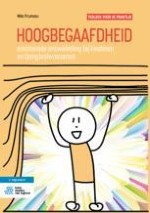Samenvatting
In dit hoofdstuk neem ik je, als lezer, mee in de voorgeschiedenis en het tot stand komen van het POSI-model en de Goodness-of-Fit Dialoog Toolbox. Het model en de toolbox zijn gebaseerd op zowel therapeutische ervaring als op diverse (empirische) theorieën en modellen: het Multifactorenmodel van Mönks, de psychosociale theorie van Erikson, de positieve-desintegratietheorie van Dabrowski, de persoonlijkheidstrek Openheid (voor nieuwe ervaringen) en het verhoogde veelzijdige sensitiviteitsmodel van Mendaglio. Alles speelt zich af binnen de sociale ervaring. Dat erkende Franz Mönks door zijn aanvulling van het model van Joseph Renzulli. Het belang van in dialoog gaan met een individu met een hoog ontwikkelingspotentieel wordt toegelicht. Tot slot leg ik uit waarom ik het label hoogbegaafdheid heb verlaten en geef ik een definitie van hoog ontwikkelingspotentieel.

